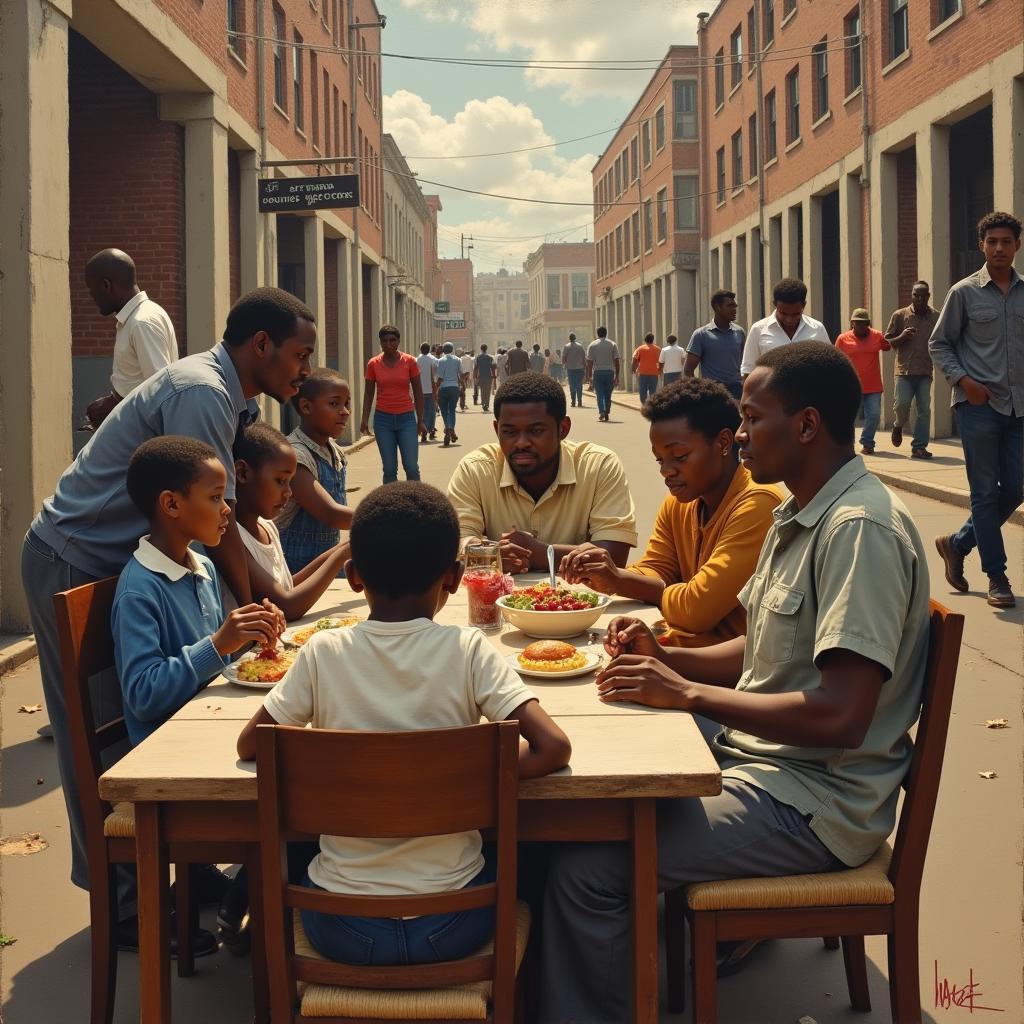Exploring the Vibrant World of African Figurative Illustration
African Figurative Illustration pulsates with life, color, and meaning. It’s a powerful visual language that tells stories, preserves traditions, and reflects the rich cultural tapestry of the African continent. From ancient rock paintings to contemporary digital art, this unique form of expression captures the essence of African Life, spirituality, and history.
The Historical Significance of African Figurative Illustration
African figurative illustration isn’t just aesthetically pleasing; it holds deep historical significance. For centuries, before written language was widespread in many parts of Africa, visual storytelling through illustration played a crucial role in preserving history, passing down knowledge, and expressing cultural values. These illustrations, often found on pottery, textiles, and in rock art, offer glimpses into the past, revealing societal structures, beliefs, and daily life. They act as a visual record, connecting us to the ancestors and their experiences.
The intricate patterns and symbolic representations found in traditional African art forms are more than just decoration; they are complex narratives. They tell stories of creation myths, heroic figures, and the interconnectedness of humans with nature and the spiritual world. By studying these illustrations, we gain a deeper understanding of the diverse cultures that have shaped the African continent.
Diverse Styles and Techniques in African Figurative Illustration
African figurative illustration encompasses a wide array of styles and techniques, reflecting the continent’s vast cultural diversity. From the bold, geometric forms of Ndebele art in South Africa to the intricate, narrative paintings of the Tingatinga style in Tanzania, each region has developed its own distinct visual language. These styles often incorporate symbolic elements and traditional motifs, adding layers of meaning to the artwork.
The materials used in African figurative illustration are as diverse as the styles themselves. Traditional materials include natural pigments, clay, wood, and textiles. Contemporary artists are experimenting with new mediums like digital art, photography, and mixed media, pushing the boundaries of traditional forms while still retaining the core values and narratives of their cultural heritage.
How African Figurative Illustration Reflects Contemporary Issues
While rooted in tradition, african figurative illustration is not static. Contemporary African artists are using this powerful medium to address current social and political issues, exploring themes of identity, globalization, and social justice. They are challenging stereotypes, reclaiming narratives, and offering fresh perspectives on the African experience in the 21st century. Their work reflects the dynamic and ever-evolving nature of African societies.
Through their art, they are sparking conversations, raising awareness, and inspiring change. They are demonstrating the enduring power of figurative illustration as a tool for communication, reflection, and social commentary.
Conclusion
African figurative illustration is a vibrant and dynamic art form with deep historical roots and a bright future. It’s a powerful visual language that continues to evolve, reflecting the rich tapestry of African cultures and experiences. From ancient rock paintings to contemporary digital art, african figurative illustration offers a unique window into the soul of Africa.
FAQ
- What is the significance of African figurative illustration? It preserves history, transmits knowledge, and expresses cultural values.
- What are some common themes in African figurative illustration? Creation myths, heroic figures, and the relationship between humans and nature.
- What materials are used in African figurative illustration? Traditional materials include natural pigments, clay, wood, and textiles, while contemporary artists also use digital mediums.
- How is African figurative illustration used today? Contemporary artists use it to address social and political issues, explore themes of identity, and challenge stereotypes.
- Where can I see examples of African figurative illustration? Museums, galleries, and online platforms showcase a diverse range of African art.
- What are some prominent styles of African figurative illustration? Ndebele, Tingatinga, and various regional styles across the continent.
- How does African figurative illustration differ from other forms of art? It often incorporates symbolic elements and traditional motifs specific to African cultures.
Common Questions about African Figurative Illustration
- What are the key characteristics of different regional styles? Each region in Africa has its own distinctive style, often influenced by local traditions, beliefs, and available materials.
- How can I learn more about the symbolism used in African art? Researching specific cultural groups and their art forms can reveal the deeper meanings behind the symbols and motifs.
- Are there opportunities to support contemporary African artists? Many galleries and online platforms specialize in showcasing and selling contemporary African art, providing direct support to the artists.
Explore More about African Art and Culture on Our Website
- Discover the beauty of African mask making traditions.
- Learn about the vibrant world of African music and dance.
- Explore the fascinating history of African storytelling.
For further assistance, please contact us at Phone: +255768904061, Email: kaka.mag@gmail.com or visit us at Mbarali DC Mawindi, Kangaga, Tanzania. Our customer service team is available 24/7.


